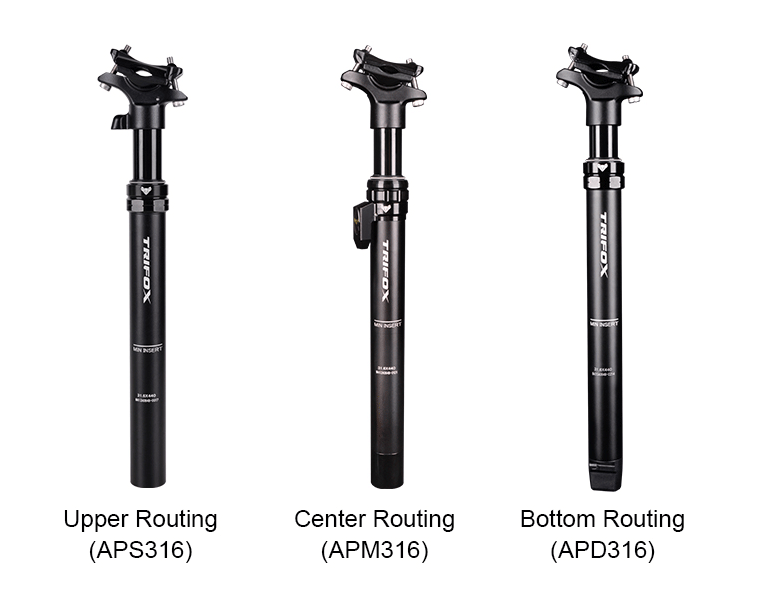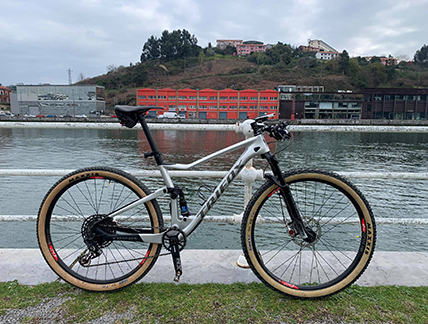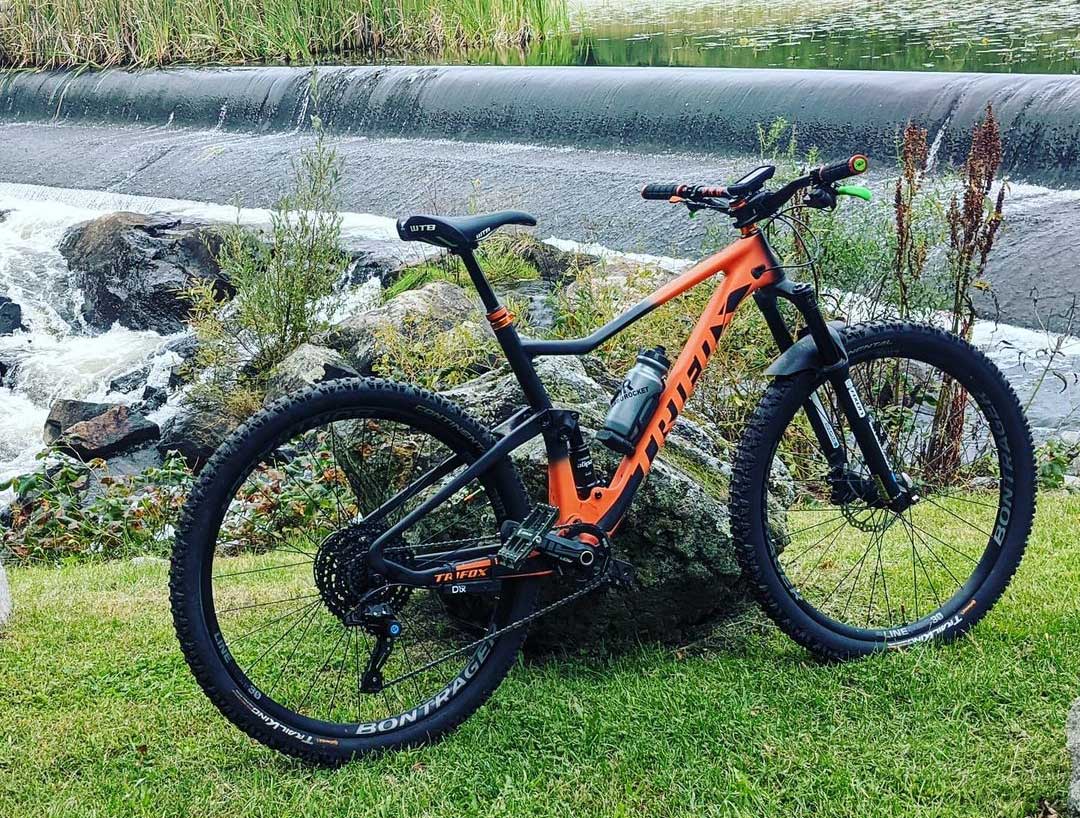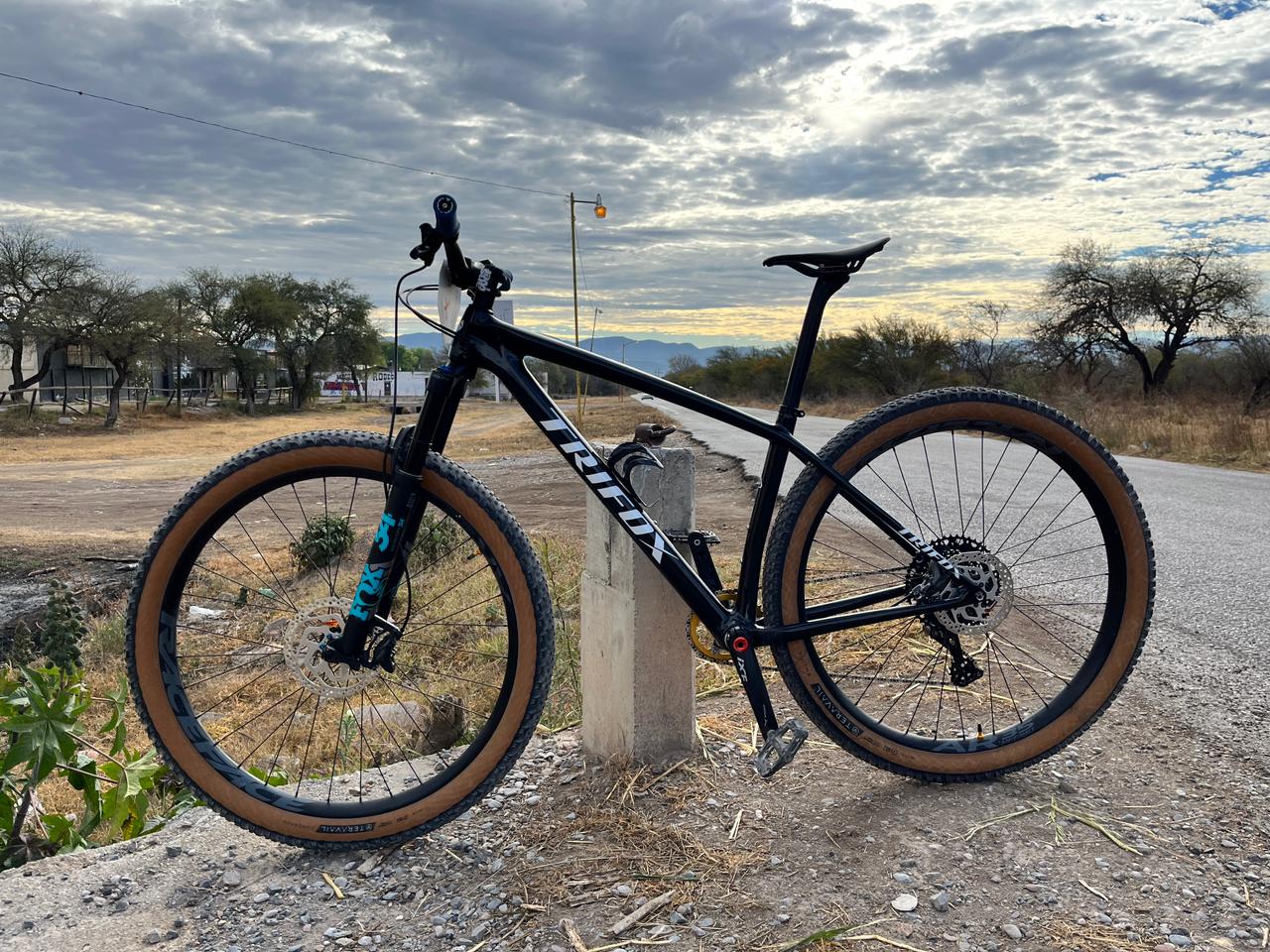
Roaming around on your bicycle during summer can be a refreshing and fulfilling activity. But, with the summer heat, it becomes essential to stay hydrated and have enough water while cycling. Fortunately, technology has brought a solution to this problem in the form of bicycle bottle cages.These cages are an essential accessory, and in this blog post, we will explore what makes them so important. 1. Convenience and Accessibility: One of the primary reasons to invest in bicycle bottle cages is convenience. It allows you to carry the water bottle with you rather than trying to hold it in your hand or shoving it in your pocket. It’s important to stay hydrated during a long ride, and bike bottle cages make it easy to carry a reliable source of hydration. It also enables you to drink water at any point during your ride. This convenience is why bottle cages have become one of the essential bicycle accessories. 2. Better Control and Safety: With bottle cages, you can keep your hands on the handlebars, providing better control and balance on the bike. Being free of having to carry or hold the water bottle, you can focus more on safe cycling practices to reduce the risk of accidents. You can also eliminate the risk of losing a bottle or accidentally dropping it on the road, which can be a safety hazard. 3. Versatlity and Durability: Bottle cages are mainly made of steel, plastic, or carbon fiber, which makes them durable even in the most extreme weather conditions. These cages can hold not only water bottles but any other drink bottles or food items as well. The versatility of bottle cages makes them suitable for any cyclist, whether you are a professional or a beginner. 4. Fits on Most bicycles: Bottle cages come in a range of sizes, shapes, and designs, and fit on most bikes, from the road bikes to mountain bikes. Multiple cages can also be fit on one bike to carry multiple bottles. They provide a variety of mounting options so one can install them on the frame, handlebars or even the saddle. Bottle cages are easy to install and affordable, making it an easy to acquire accessory for every cyclist. 5. Style and Look: Bottles cages are not just a functional accessory; they also add to the bike's styling and aesthetics. They come in a range of colors and designs, which allows you to personalize and customize your bike. You can choose the color that blends with your bike's framework or even match it to your cycling apparel. In conclusion, bicycle bottle cages make for an essential accessory for every cyclist. Their primary function of providing easy access to hydration ensures they play a crucial role in the cyclist's overall performance. With better control, safety, durability, versatility, and style, bottle cages provide an all-round solution to a cyclist's comfort and performance. Their easy installation and affordability make them a must-have bike accessory. Whether you are a beginner or an experienced cyclist, investing in a bicycle bottle cage is an excellent decision. Stay hydrated while enjoying the refreshing ride on your bicycle.

Carbon bike frames have become increasingly popular in recent years for their lightness, stiffness, and aerodynamics. However, one of the biggest challenges with these frames is damage. Carbon frames can be vulnerable to cracks, chips, and dents, leaving riders to wonder if repair is a viable option. Let's start with the pros of repairing a carbon bike frame. Firstly, repairing a carbon frame costs less than buying a new one. Carbon frames can be expensive, and repairing them can be a much more affordable option compared to buying a new one. Secondly, if you're attached to your bike, and it fits you like a glove, repairing it can be emotionally satisfying. Thirdly, repairing rather than replacing a carbon frame is environmentally friendly. It reduces the amount of waste created, which is a great way to help the planet. While there are some pros of repairing carbon frames, there are also some cons you should be aware of. The first and most significant disadvantage is safety. When a carbon frame cracks, it’s hard to spot the damage, and fixing it can lead to further weaknesses in the structure. Moreover, the repair process can’t always be guaranteed and can only be as strong as the manufacturer’s original build. In essence, the structural integrity of the frame is compromised, making it unsafe. Additionally, repairing a carbon frame can be time-consuming, which can mean being without your bike for an extended period. Another factor to consider when thinking about repairing a carbon frame is the type of damage. You should recognize that some types of damage can't be repaired. For example, a crushed tube, or a large hole caused by impact, are irreparable, and the only solution is a replacement. Lastly, aesthetic concerns should also be noted. After a repair job, there may be a visible patch that can be unsightly and be a constant reminder of the accident. Repairing a carbon bike frame is a viable option for minor damage like chips and scratches, and it can be a cost-effective and environmentally friendly way to maintain your bike. However, you should note that repairing a carbon frame comes with some risks; it can compromise the structural integrity of the frame, making it unsafe. Before you decide to repair your carbon bike frame, make sure you seek advice from an experienced bike mechanic or manufacturer to ensure it is safe to ride. And always remember that safety is paramount when it comes to bikes, especially with carbon bike frames

Riding a mountain bike is an exhilarating experience, but it can also be a physically demanding activity. As you traverse through challenging terrains and steep slopes, you need to adjust your seatpost angle to maintain balance and propel forward. This is where adjustable seatposts come into play. Revolutionizing your ride with mountain bike adjustable seatpost can be a total game changer. They offer you the flexibility to adapt to any riding situation on the fly, increasing your control and confidence. In this blog post, we will discuss some of the best adjustable mountain bike seatposts available in the market. 1. Dropper Post AP309 and AP316: If you are looking for an adjustable seatpost that is sturdy, safe, and easy to use, the Dropper Post AP309 and AP316 are perfect for you. They are available in two sizes- 30.9mm and 31.6mm, and both come with a central control reinforced frame head. Additionally, the one-piece fit articulation increases safety and prevents the seatpost from loosening over time. You can also change the cushion angle and adjust the stroke, which makes it suitable for AM/FR/DH riding environments. The Stabl oil pressure spring structure with fine-tuning damping and locking function enhances the overall riding experience. On top of that, the seatpost is equipped with a high-quality aviation level 7075 aluminum, making it lightweight and durable. You can choose a 125mm travel dropper post that comes with a line control switch that you can install on your bike handle. The line length is 1.5m. 2. Super Light Straight Carbon Seatpost SLS21: The Super Light Straight Carbon Seatpost SLS21 is for those who want a sleek, lightweight, and robust adjustable seatpost. With diameters of Φ31.6mm, Φ30.9mm, Φ30.8mm, and Φ27.2mm, this seatpost offers a perfect fit for most mountain bikes. The screw is made of titanium, and the finish is UD matte. This seatpost is ideal for racing, as it offers a weight advantage without compromising on strength or durability. It is easy to adjust and can withstand the rigors of all mountain biking environments. 3. 400mm Carbon Layback MTB Seatpost CDS100: The 400mm Carbon Layback MTB Seatpost CDS100 is a practical, easy-to-use, and dependable seatpost that offers maximum adjustability. The seatpost comes with a layback offset of 20mm (Φ27.2mm / Φ31.6 mm), making it suitable for mountain biking enthusiasts who want a comfortable riding position. It has a sturdy and durable carbon fiber construction that can withstand any terrain. The layback MTB seatpost style offers additional clearance, making it easier for you to navigate challenging terrains. With this seatpost, you can customize the angle according to your preference and enjoy a more comfortable ride. Conclusion: Mountain biking is an adrenaline-packed sport, and adjustable seatposts can enhance that experience. Whether you are a professional racer or a casual rider, the type of seatpost you use can make a huge difference. Adjustable seatposts take the guesswork out of finding the perfect position when climbing steep mountains or descending winding trails. We hope this blog post has given you an insight into some of the best adjustable mountain bike seatposts available on the market. Choose one that fits your needs and hit the trails with confidence. Happy riding!

Achieving a smooth and efficient ride on your bike requires careful consideration of each component, including the hub. One essential factor to consider when selecting a hub is its compatibility with your bike's other components. In this article, we will discuss the concept of hub compatibility and its role in finding the ideal hub for your bike.What is Hub Compatibility?Hub compatibility refers to the ability of a bike hub to work seamlessly with other components of your bike, such as the axle, frame, and drivetrain. Factors that determine hub compatibility include:Axle type: Hubs are designed to work with specific axle types, such as quick release or thru-axle. It's important to choose a hub compatible with your bike's axle system.Axle dimensions: The length and diameter of the axle must match the hub's specifications. Common axle dimensions for mountain bikes include 100x9mm (front) and 135x10mm (rear) for quick-release systems, and various sizes for thru-axles, such as 100x15mm (front) and 142x12mm (rear).Brake system: Hubs are designed to accommodate either rim brakes or disc brakes. Make sure to select a hub that works with your bike's brake system.Drivetrain compatibility: Hubs have different freehub bodies to accommodate various drivetrain systems, such as Shimano, SRAM, or Campagnolo.By mastering hub compatibility, you can unlock the full potential of your bike and ensure a smooth, enjoyable ride. Happy biking!

One of the most important factors when it comes to purchasing a mountain bike is choosing the right size. An improperly sized mountain bike can greatly affect your riding experience, from causing discomfort and pain to reducing your control and performance on the trails.In this article, we will take a comprehensive look at the MTB frame size chart and provide recommendations for finding the perfect size for you. We will also discuss important geometric terms and their meanings, as well as the problems that can arise from choosing the wrong size.MTB Frame Size Chart and Recommendations:Mountain bike frames come in a variety of sizes, typically measured in inches or centimeters. The size of the frame refers to the length of the seat tube, which is the part of the frame that holds the seat post and saddle.When it comes to selecting the right size frame, there are several factors to consider, including your height, inseam length, and riding style. Here are some general recommendations based on height:For riders under 5'4", a small frame (14-15 inches) is recommended.For riders between 5'4" and 5'8", a medium frame (15-17 inches) is recommended.For riders between 5'8" and 6'2", a large frame (17-19 inches) is recommended.For riders over 6'2", an extra-large frame (19-21 inches) is recommended.It's important to note that these recommendations should be used as a starting point, and riders should also consider other factors such as their riding style and personal preference.For most mtb frames, you can find the mtb frame size chart in the product details page, such as Carbon MTB Frame MFM100Important Geometric Terms and Their Meanings:When looking at the MTB frame size chart, there are several important geometric terms to be familiar with:Reach: The distance between the bottom bracket (where the pedals attach to the frame) and the center of the head tube (where the fork attaches to the frame). This measurement affects how stretched out or upright you will be on the bike.Stack: The distance between the center of the bottom bracket and the top of the head tube. This measurement affects the height of the handlebars in relation to the saddle.Standover Height: The distance between the ground and the top tube of the frame. This measurement affects how much clearance you have when standing over the bike.Problems Caused by Choosing the Wrong Size:Choosing the wrong size mountain bike frame can cause several problems, including discomfort, pain, and reduced control and performance on the trails. If the frame is too small, it can cause cramped and uncomfortable riding positions, while a frame that is too large can cause difficulty reaching the handlebars and pedals.A poorly fitting mountain bike can also cause pain and discomfort in the back, neck, shoulders, and wrists, as well as numbness or tingling in the hands and fingers. In addition, a wrong size frame can greatly affect your control and performance on the trails, leading to accidents and injuries.Conclusion:In conclusion, choosing the right size mountain bike frame is essential for a comfortable and enjoyable riding experience. By using the MTB frame size chart and considering important geometric terms, riders can find the perfect size for their height, inseam length, and riding style.Remember, it's important to not solely rely on the general recommendations and also to take into account your own physical anatomy and riding preferences. Don't overlook the importance of selecting the correct size as it can save you from a lot of pain, discomfort, and accidents in the long run.

Measuring your mountain bike frame is essential when it comes to determining the correct size for a comfortable and safe ride. A properly sized frame can prevent injuries, improve handling, and enhance your overall mountain biking experience. In this article, we’ll provide you with the step-by-step process on how to measure your mountain bike frame.Step 1: Measure Your HeightStand with your back against a wall and measure your height using a measuring tape or ruler. Make sure to remove your shoes for more accurate results.Step 2: Determine Your Inseam LengthThe inseam length is the distance from the floor to your crotch. Measure this distance while wearing shoes and record the measurement.Step 3: Use Your Height and Inseam Length to Calculate Frame SizeTypically, bike manufacturers provide size charts that recommend the frame size based on your height and inseam length. However, you can also use a simple formula to calculate your frame size manually. Here’s how:Multiply your inseam measurement by 0.67Subtract 3 inches from the resultThe resulting number is your recommended frame sizeFor example, if your inseam length is 30 inches, the calculation would look like this:30 x 0.67 = 20.1 20.1 - 3 = 17.1Therefore, your recommended frame size would be 17.1 inches.Step 4: Check the Standover HeightStandover height refers to the distance between the ground and the top of the bike frame's top tube when the bike is standing upright. To check this measurement, straddle the bike with both feet on the floor and measure the distance between the ground and the top of the top tube. Make sure there is at least an inch of clearance between you and the top tube to ensure a safe and comfortable ride.Step 5: Test Ride the BikeOnce you have calculated the recommended frame size and checked the standover height, it's time to test ride the bike. This step is crucial to determine whether the bike is the correct size for you. Take a short ride and pay attention to how the bike handles and feels. A well-fit bike should feel comfortable to ride and allow for easy handling.ConclusionMeasuring your mountain bike frame may seem like a daunting task at first, but it's essential for a comfortable and safe ride. By following our step-by-step guide, you can ensure that you have a properly sized frame that fits your height, inseam length, and standover height. Remember to test ride the bike to ensure that it feels comfortable and handles well. Happy riding!

Carbon fiber bikes have become increasingly popular in recent years due to their lightweight, stiffness, and performance. However, buying a carbon bike can be a daunting task, especially for those who are new to cycling or unfamiliar with the technology. In this article, we’ll provide a comprehensive guide to help you choose a satisfactory carbon bike that meets your needs and budget.Step 1: Define Your Riding GoalsThe first step in buying a carbon bike is to define your riding goals. Consider factors such as the type of riding you plan to do, your fitness level, and your budget. Are you looking for a racing machine, an endurance bike, or a versatile all-rounder? Knowing your goals and budget will help you narrow down your options and focus on the features that are most important to you.Step 2: Choose the Right FrameThe frame is the heart of any bike, and it’s no different for carbon bikes. When choosing a carbon frame, consider factors such as weight, stiffness, and comfort. Also, consider the geometry of the frame, which can significantly impact the bike’s handling and performance. Finally, consider the manufacturer's reputation and warranty.Step 3: Select the Right ComponentsOnce you’ve chosen your frame, it’s time to select the right components. This includes the drivetrain, brakes, wheels, handlebars, stem, and seat post. Consider factors such as weight, performance, and compatibility with your frame. Remember, the right components can significantly impact the bike’s performance and feel.Step 4: Choose the Right SizeChoosing the right size is critical to ensure comfort, efficiency, and performance. Carbon bikes come in a range of sizes, and it’s important to choose the right one for your body type and riding style. Consider factors such as the length of the top tube, the height of the seat post, and the length of the stem.Step 5: Test Ride and AdjustBefore making a final decision, it’s essential to test ride the bike and make adjustments to ensure a perfect fit. Pay attention to factors such as saddle height, handlebar reach, and cleat position. A good bike shop will help you make these adjustments and ensure that your new carbon bike fits you perfectly.In conclusion, buying a carbon bike can be a daunting task, but by following these steps and taking your time, you can choose a satisfactory carbon bike that meets your needs and budget. Remember, it’s essential to define your riding goals, choose the right frame and components, choose the right size, and test ride and adjust the bike to ensure a perfect fit. With the right bike, you’ll be able to enjoy the benefits of carbon fiber technology and take your cycling performance to the next level.

Building a new carbon fiber road bike is an exciting process that requires a significant investment of time and money. However, the end result is a high-performance machine that is tailored to your individual needs and preferences. In this article, we’ll take a closer look at the process of building a new carbon fiber road bike.Step 1: Define Your Goals and BudgetThe first step in building a new carbon fiber road bike is to define your goals and budget. Are you looking for a racing machine, a comfortable endurance bike, or a versatile all-rounder? Once you have a clear idea of what you’re looking for, you can start researching the available options and setting a budget.Step 2: Choose Your FrameThe next step is to choose your frame. Carbon fiber frames are popular for their lightweight and stiff construction, which offers excellent power transfer and responsiveness. When choosing a frame, consider factors such as weight, stiffness, comfort, and aerodynamics. Also, consider the compatibility with your desired components such as brakes, bottom brackets, and wheelsets.Step 3: Select Your ComponentsAfter choosing your frame, it’s time to select your components. The choice of components can significantly impact the performance and feel of your bike. Consider factors such as the type of drivetrain, brakes, wheels, handlebars, stem, and seat post. Each of these components has a variety of options to fit your preferences and budget.Step 4: Assemble Your BikeOnce you have your frame and components, it’s time to assemble your bike. Depending on your level of experience, you may choose to do this yourself or have it done by a professional bike mechanic. Assembling a bike involves installing components such as the headset, bottom bracket, seat post, and wheels. It’s important to take your time and follow the manufacturer's instructions closely to ensure a safe and reliable build.Step 5: Test and AdjustThe final step is to test and adjust your bike. This involves ensuring that everything is properly tightened and adjusted, and taking the time to properly fit the bike to your body. Consider factors such as saddle height, handlebar reach, and cleat position. After this is done, take your bike for a test ride to ensure everything is working as expected.In conclusion, building a new carbon fiber road bike is a rewarding process that allows you to create a high-performance machine tailored to your individual needs and preferences. By following these steps and taking your time, you can create a bike that will provide you with years of enjoyment on the road.















